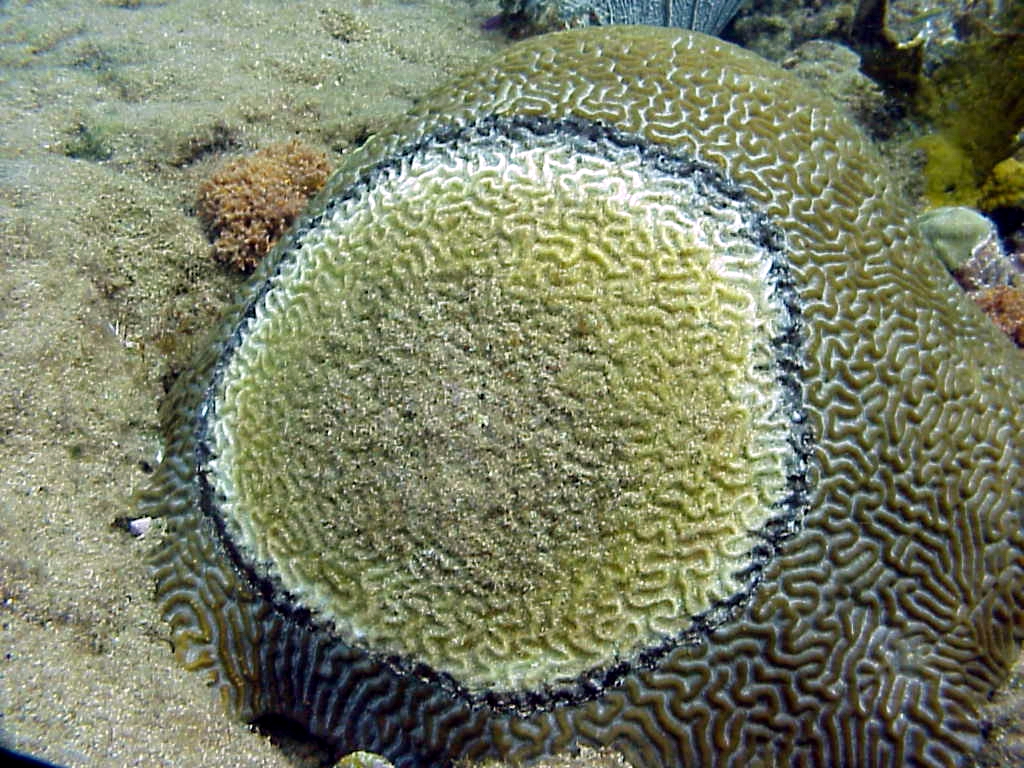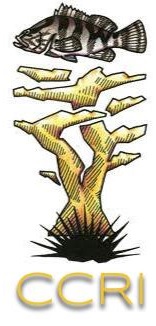
Credit: Ernesto Weil
Black-band disease (BBD), caused by several microorganisms such as Phormidium corallyticum, Beggiatoa spp., and Desulfovibrio spp., develops as a closely interwoven black mat of filaments, eventually resulting in the separation of the coral tissue from its calcium carbonate skeleton. Several outbreaks of BBD near La Parguera, Rincon and Aguadilla (Puerto Rico) have been documented since 1999. Although the prevalence of BBD has declined since Hurricane Georges (1998), localized outbreaks in previously unaffected areas have been reported such as on Desecheo and Mona Islands. Between 2002 and 2006, outbreaks were observed at shelf edge sites off La Parguera and off Mona Island among shallow habitats dominated by Diploria spp. Infections have been sporadic and uncommon (less than 0.5%), with a slight increase following the 2005 bleaching event and seasonal increases during summer and fall months.
References & more
- Aeby G.S., Santavy D.L. (2006) Factors affecting susceptibility of the coral Montastraea faveolata to black-band disease. Marine Ecology Progress Series 318: 103-110
- Lewis C.L., Neely K.L., Richardson L.L., Rodriguez-Lanetty M. (2017) Temporal dynamics of black band disease affecting pillar coral (Dendrogyra cylindrus) following two consecutive hyperthermal events on the Florida Reef Tract. Coral Reefs 36: 427-431
- Sato Y., Bourne D.G., Willis B.L. (2009) Dynamics of seasonal outbreaks of black band disease in an assemblage of Montipora species at Pelorus Island (Great Barrier Reef, Australia). Proceedings of the Royal Society 206: 2795-2803. doi: 10.1098/rspb.2009.0481
